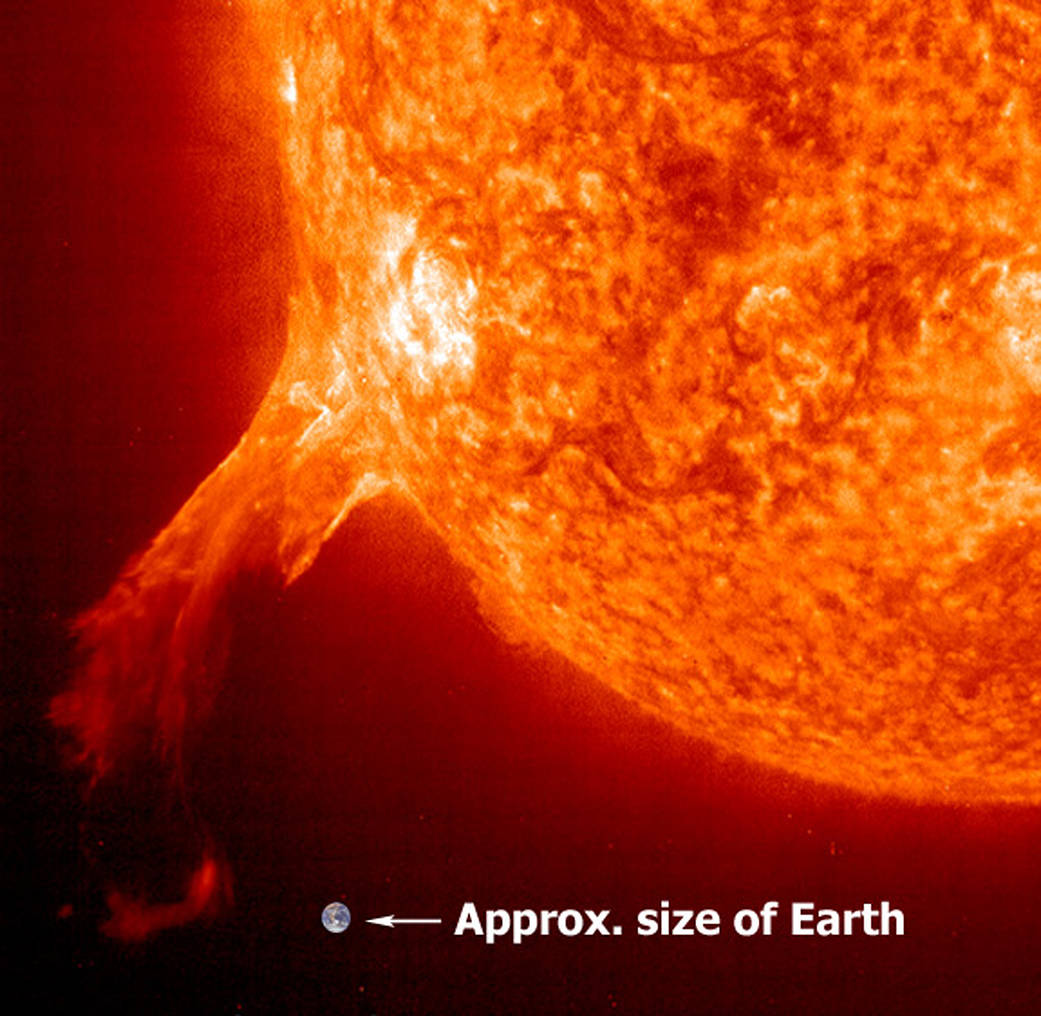A closeup of an erupting prominence with Earth inset at the approximate scale of the image. Taken on July 1, 2002. Credit: SOHO, ESA & NASA
Solar activity associated with Space Weather can be divided into four main components: solar flares, coronal mass ejections, high-speed solar wind, and solar energetic particles.
- Solar flares impact Earth only when they occur on the side of the sun facing Earth. Because flares are made of photons, they travel out directly from the flare site, so if we can see the flare, we can be impacted by it.
- Coronal mass ejections, also called CMEs, are large clouds of plasma and magnetic field that erupt from the sun. These clouds can erupt in any direction, and then continue on in that direction, plowing right through the solar wind. Only when the cloud is aimed at Earth will the CME hit Earth and therefore cause impacts.
- High-speed solar wind streams come from areas on the sun known as coronal holes. These holes can form anywhere on the sun and usually, only when they are closer to the solar equator, do the winds they produce impact Earth.
- Solar energetic particles are high-energy charged particles, primarily thought to be released by shocks formed at the front of coronal mass ejections and solar flares. When a CME cloud plows through the solar wind, high velocity solar energetic particles can be produced and because they are charged, they must follow the magnetic field lines that pervade the space between the Sun and the Earth. Therefore, only the charged particles that follow magnetic field lines that intersect the Earth will result in impacts.




























